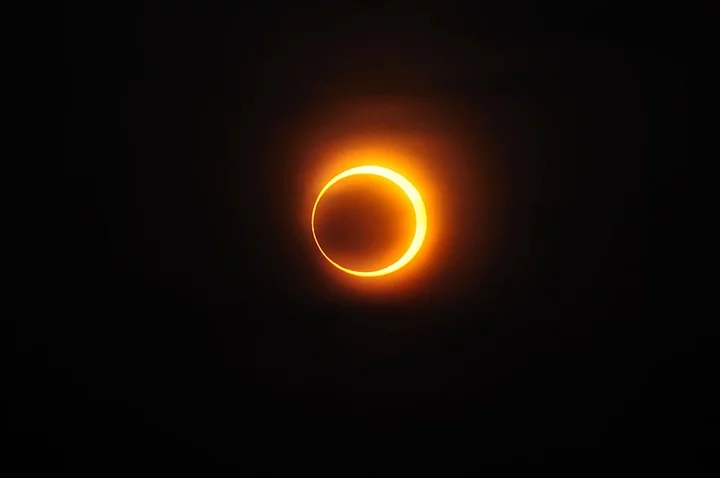An annular solar eclipse captured above Jinan, China in 2010 | Image: A013231, CC BY-SA 3.0, via Wikimedia Commons
###
If the weather decides to clear up this weekend, your eyes will be in for a special treat! An annular solar eclipse will cross North, South and Central America on Saturday morning and will be visible in many parts of the United States, including in our own little pocket of Northern California.
But what exactly is an annular solar eclipse? Well, as you probably already know, a solar eclipse occurs when the Moon passes directly between Earth and the Sun, casting the Moon’s shadow onto Earth. During a full eclipse, the Sun’s disc is completely covered by the Moon, but during an annular eclipse, the Moon is closer to the Sun, leaving a bright ring of the Sun, known as the “ring of fire,” visible around the Moon. Our area won’t quite get the full “ring of fire” experience, though, the US National Weather service notes.
“In NW California, the eclipse will be a partial eclipse,” NWS posted on its Facebook page. “A partial eclipse means that only part of the solar disk is covered by the moon. A partial solar eclipse will be visible in every U.S. state except for Hawaii.”
In Eureka, the eclipse will begin at 8:04 a.m., with the peak at 9:17 a.m., and end at 10:39 a.m. Unfortunately, it looks like the local weather won’t be the best for viewing this celestial event, with NWS saying the latest forecast for the North Coast calls for cloudy skies with a chance of rain on Saturday. But since LoCO is giving you several days to plan, maybe you have time to drive somewhere the weather is more agreeable and/ or more within the path of the annular eclipse! Might we suggest Alturas or Eugene? Or if you’re feeling really frisky, you could head to Battle Mountain, Nevada or Albuquerque, New Mexico, which both fall squarely within the eclipse’s path.
Check out this video from Great American Eclipse, simulating the path of the moon’s shadow if it were viewed from 125 miles above:
And if you’re someone who gets especially excited about eclipses, it might actually be worth traveling a bit to see this one, because we won’t have a chance to experience another annular eclipse until 2039. There will be a full solar eclipse on April 8, 2024, but our area is not in a prime viewing location for that event.
Whether the weather lets up, or you do decide to travel elsewhere, remember that this will not be a full eclipse, which means that even during the peak of the eclipse, it is not safe to look directly at the Sun! To view the event safely, you will need special glasses or an eclipse viewer. You can also make your own eclipse projector, using a few items that you probably already have at home. You can find more information on proper viewing safety and how to make your own projector box on NASA’s website.
Happy eclipse-viewing, everyone! Please don’t burn your retinas.

CLICK TO MANAGE